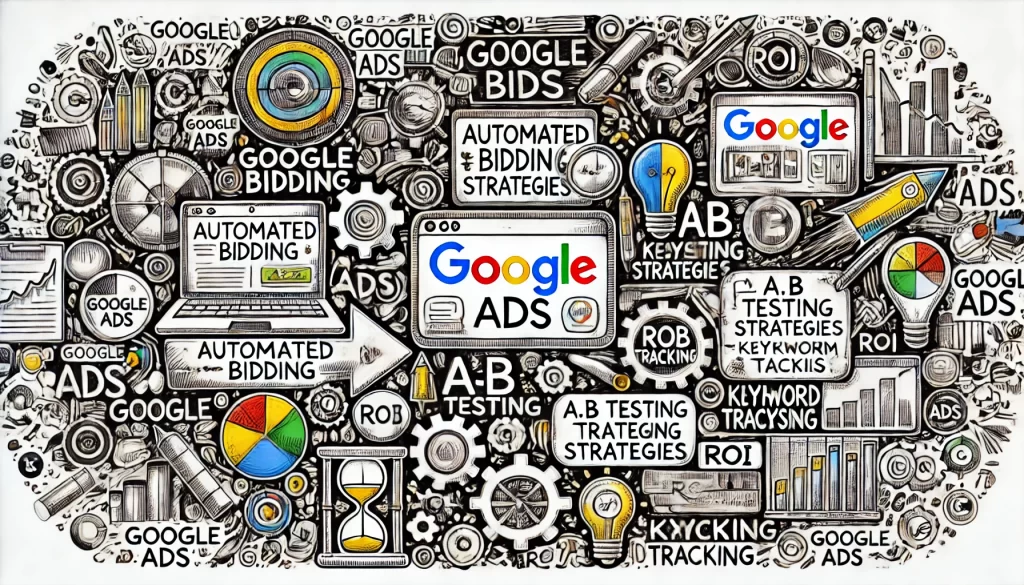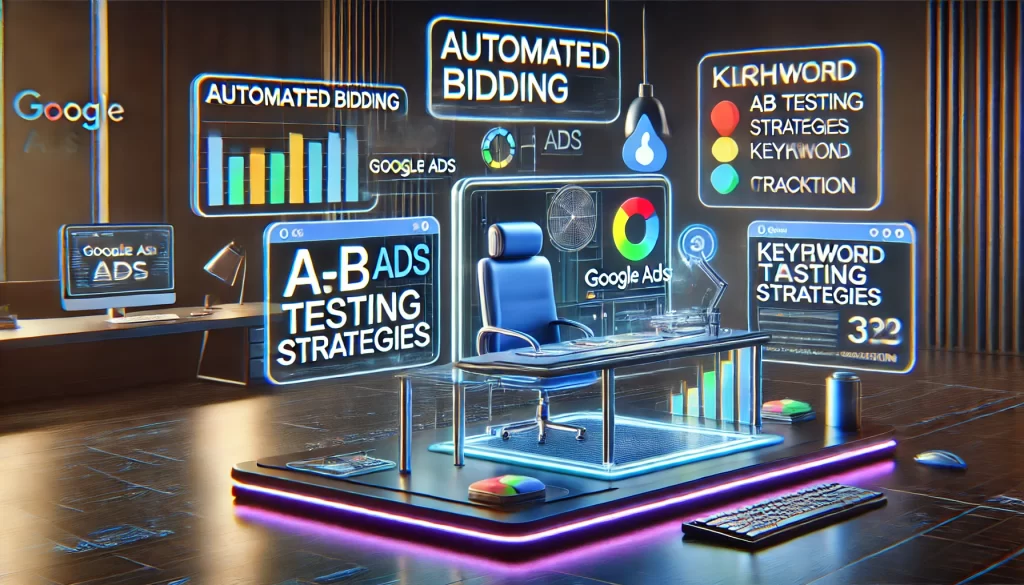Introduction
In today’s digital world, online advertising is crucial for businesses to reach their target audience. Google Ads, formerly known as Google AdWords, is one of the most powerful advertising platforms available. With billions of searches happening every day, Google Ads allows businesses to showcase their products or services to potential customers who are actively searching for solutions. But what makes Google Ads stand out in the crowded advertising space?
Google Ads is more than just a pay-per-click platform. It offers a wide range of features designed to optimize advertising efforts, increase visibility, and boost sales. In this blog post, we will explore the core features of Google Ads, its benefits, and how you can leverage its capabilities to enhance your advertising campaigns. By understanding Google Ads’ features and benefits, you can maximize the return on your investment (ROI) and make your advertising dollars go further.

Core Benefits of Google Ads
Google Ads is a versatile and highly effective platform, offering various tools and features designed to help advertisers achieve their marketing goals. Below are the key benefits of using Google Ads:
Related Posts:
- Understanding Google Ads: Features and Benefits
- Comparing Display Ads vs. Search Ads
- Setting Up Local Service Ads: Boost Your Local Business
Automated Bidding
One of the standout features of Google Ads is automated bidding. Rather than manually setting bids for each ad, automated bidding allows Google to automatically adjust your bids based on the likelihood of achieving your desired result, such as clicks or conversions. This helps optimize ad spend and ensures you’re getting the most out of your budget.
What is Automated Bidding?
Automated bidding in Google Ads allows you to set a goal for your campaigns whether it’s maximizing clicks, conversions, or impressions and Google’s machine learning algorithms automatically adjust your bids in real-time to achieve that goal. Google Ads evaluates factors such as the user’s device, location, time of day, and more to determine the best bid for each auction.
How Does Automated Bidding Optimize Ad Spend?
Automated bidding optimizes ad spend by helping you achieve your campaign goals without having to manually adjust bids. For instance, if your goal is to maximize conversions, Google Ads will raise bids for ads that have a higher chance of converting, ensuring that you don’t waste your budget on underperforming ads. This allows you to get the most value from your advertising dollars while ensuring that your campaigns are efficient and effective.
Core Benefits for Advertisers
- Time-Saving: By automating bidding decisions, advertisers can save time and focus on other aspects of their campaigns.
- Improved Efficiency: Automated bidding helps ensure that your ads are shown to the most relevant users at the right time.
- Better ROI: Automated bidding can help you achieve your advertising goals, such as maximizing conversions or clicks, while optimizing your ad spend for maximum return.
The Three Core Principles of Google Ads
To make the most out of Google Ads, it’s essential to understand the three core principles that underpin the platform’s advertising model. These principles guide the way Google Ads works and help you design more effective campaigns.
Related Posts:
- Setting Up Local Service Ads: Boost Your Local Business
- Service-Specific Ads
- Google Ads Specifications
What Are the Foundational Principles of Google Ads?
- Quality Score: Quality Score is a measure of the relevance of your ad and landing page to the keywords you’re targeting. It’s based on factors such as ad relevance, expected click-through rate (CTR), and landing page experience. Google rewards high-quality ads by reducing the cost per click (CPC) and improving ad positioning.
- Ad Rank: Ad Rank determines the position of your ad in search results. It’s calculated by multiplying your bid by your Quality Score. This means that you don’t have to bid the highest amount to appear at the top; a high-quality Score can allow you to compete with advertisers bidding higher amounts.
- Ad Auction: The Google Ads auction is the process that determines which ads appear and in which order. The auction takes place every time a user’s search triggers an ad. Google evaluates your bid, Quality Score, and other factors to decide your ad’s position.
How Understanding These Principles Can Enhance Campaign Performance
By understanding and optimizing these core principles, you can improve your campaign’s performance, reduce costs, and increase the chances of your ads being shown to the right audience. A high-quality Score can lower your CPC, giving you an edge over competitors while ensuring your ads appear in prime positions.

Google Ads Testing & A/B Testing
Testing is an essential component of successful advertising campaigns. Google Ads offers robust testing tools that help you measure and improve the effectiveness of your ads. The most common testing method is A/B testing, which allows you to test different ad variations to see which performs better.
What is A/B Testing?
A/B testing involves creating two (or more) versions of an ad and testing them against each other to determine which one performs better. You can test various elements, such as headlines, descriptions, and calls-to-action (CTAs), to find the optimal combination for your target audience. By comparing the performance of different ads, you can continuously refine your campaigns to improve your results.
How Google Ads A/B Testing Helps Improve Ad Performance
A/B testing in Google Ads allows you to gather data on how different ads perform, enabling you to make informed decisions about your advertising strategy. For example, if one headline leads to a higher CTR than another, you can prioritize that version and apply similar principles to other parts of your campaign.
Best Practices for Effective Testing
- Test One Variable at a Time: To accurately measure the impact of changes, only test one element (e.g., headline, CTA, or ad copy) at a time.
- Ensure Sufficient Data: Let your test run for enough time to gather meaningful data before making decisions based on results.
- Use Data to Optimize: Once you have a winner, use the insights from your A/B test to refine your ads and improve their performance.
Google Ads Testing Strategies
While A/B testing is one way to improve your ads, other testing strategies can help increase your click-through rates (CTR) and conversion rates.
Testing Strategies to Improve CTR and Conversion Rates
- Ad Copy Variations: Experiment with different versions of your ad copy to determine which messaging resonates most with your target audience. Test various headlines, CTAs, and descriptions to optimize engagement.
- Targeting Tests: Test different targeting options, such as location, device, and demographics. This will help you identify the most valuable audience for your ads and maximize your reach.
- Landing Page Testing: Test different landing pages to see which version converts visitors into customers more effectively. Make sure the landing page aligns with the ad’s message and provides a seamless user experience.
- Bid Strategy Tests: Experiment with different bidding strategies (e.g., manual CPC vs. automated bidding) to find the most cost-effective approach for achieving your goals.
By consistently testing and optimizing your ads, you can continuously improve their performance, reduce wasted ad spend, and achieve a higher ROI.
Key Takeaways
Google Ads is an incredibly powerful advertising tool that, when used correctly, can drive significant results for your business. Understanding the platform’s key features such as automated bidding, the three core principles, and A/B testing will help you create more effective campaigns and achieve better performance. By leveraging these features and following best practices, you can optimize your ad spend, improve your CTR, and generate more conversions. To succeed with Google Ads, remember that it’s not just about setting up your campaign and letting it run. Regular testing, monitoring, and optimization are essential for staying ahead of the competition and continually improving your results. Keep refining your approach, and you’ll see the benefits of well-executed Google Ads campaigns.
Google Ads offers a wealth of features and tools to help businesses reach their target audience effectively. From automated bidding to A/B testing strategies, understanding the platform’s specifications and best practices is key to creating successful campaigns. With the right approach, you can maximize your ad spend, improve your campaign results, and achieve higher conversions.
- Automated Bidding: Saves time and optimizes ad spending for better results.
- Core Principles: Understand Quality Score, Ad Rank, and the Ad Auction to create more effective campaigns.
- A/B Testing: Helps refine ad performance and optimize conversion rates.
- Continuous Optimization: Testing, monitoring, and adjusting are critical to long-term success with Google Ads.
FAQs
What is Google Ads’ automated bidding?
Automated bidding allows Google to adjust your bids in real time based on factors like user behavior, location, and time of day to maximize your ad’s effectiveness.
How can A/B testing improve Google Ads performance?
A/B testing helps identify which versions of your ads perform best, allowing you to refine your copy, CTA, and other elements for higher engagement and conversions.
What are the core principles of Google Ads?
The three core principles of Google Ads are Quality Score, Ad Rank, and the Ad Auction, which together determine how and where your ads appear.
How can I improve my CTR with Google Ads?
To improve your CTR, focus on writing compelling ad copy, testing different ad variations, and targeting the right audience with precise keywords and demographics.
What is the best bidding strategy for Google Ads?
The best bidding strategy depends on your goals. For example, if you’re focused on conversions, automated bidding strategies like Target CPA can help optimize your bids for better results.